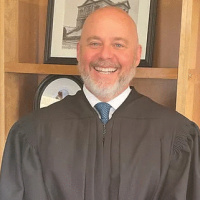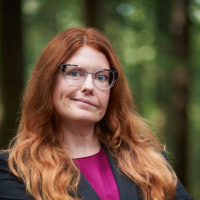
Roger asks Gregory Kreis, April Van Dyke…
Victim’s rights
Both of you spent your entire careers as attorneys defending people accused of crimes. Can you set aside your history of advocacy to be impartial as a judge? Please discuss how crime victims will be treated in your courtroom and know that they will be heard and be able to receive justice in your court. Specific to Ms. Van Dyke, it seems like your entire reason for running for judge is so that you can be an advocate for criminal defendants from the position of a judge. Please discuss that, too.
— Roger
Responses

Gregory Kreis
Thank you for your inquiry. In essence, yes, I have unequivocally set aside any semblance of partiality since assuming the role of a judge. Upon my appointment, I took the proactive step of changing my party registration from Democrat to No Party Preference. This deliberate choice was aimed at ensuring there would be no perception of bias as I embarked on my career as an impartial judge.
Turning to the treatment of victims and their families, I am committed to affording them every opportunity to be heard. Recently, I set aside an entire afternoon to allow family or friends to express their thoughts on a verdict in a homicide case before I issued a ruling. I firmly believe it is essential, especially for a judge, to grasp the impact of a defendant’s actions on the victim and the victim’s family and friends before sentencing. This practice will remain a cornerstone when I am re-elected.
Thank you.

April Van Dyke
Good morning, Roger. Thank you for this question.
I understand the misconception that an attorney that has dedicated their career to defending those charged with crimes do not have experience with victims. That is simply not true. As a defense attorney I have seen the effects of being a victim on my clients. Often the people I represent have been victims of some of the most heinous crimes. Also as a defense attorney I often provide support to the victims of the crimes my clients have been charged with. Frequently, I have been contacted by victims because their voices are not being heard.
As a judge I will not be an advocate for either party not only is that not allowed, and I would hope to be quickly removed by the council on judicial performance if I engaged in such unethical behavior, but it is morally wrong. Victims have Constitutional rights in California. They have a right to be heard at EVERY court date. I will treat EVERYONE in my courtroom with empathy and respect.
Not only will I abide by the laws about protecting victim’s rights I hope to expand power given to victims. I have spoken several times about my plan to bring a restorative justice program to Humboldt County. Restorative justice programs seek to give power back to victims of crime. Not only do studies show it helps prevent recidivism, stopping the creation of new victims, but it helps the victims.
Participation in restorative justice programs have shown to decrease the rate of Post-Traumatic Stress Disorder in victims along with increasing their confidence in the legal system. Many of the results also point out considerable reductions in negative emotions expressed by victims after their participation in restorative justice mediations or conferences and reduction in anger felt by victims toward their offenders is lower after participating in restorative justice programs, compared to the levels of anger felt by victims who were subjected to conventional justice interventions.
As for the recovery of aspects created by the victimization process, studies show that the participation of victims in restorative justice promotes a reduction in feelings of helplessness and increases self-esteem.
The results show that these practices meet the multiple emotional needs of victims, reporting a greater involvement in the justice processes and satisfying the need for information, expression, and validation. Additionally, victims report that participation in restorative justice gave them a sense of emotional closure. This sense of closure has been shown to be a prevalent result over time.
